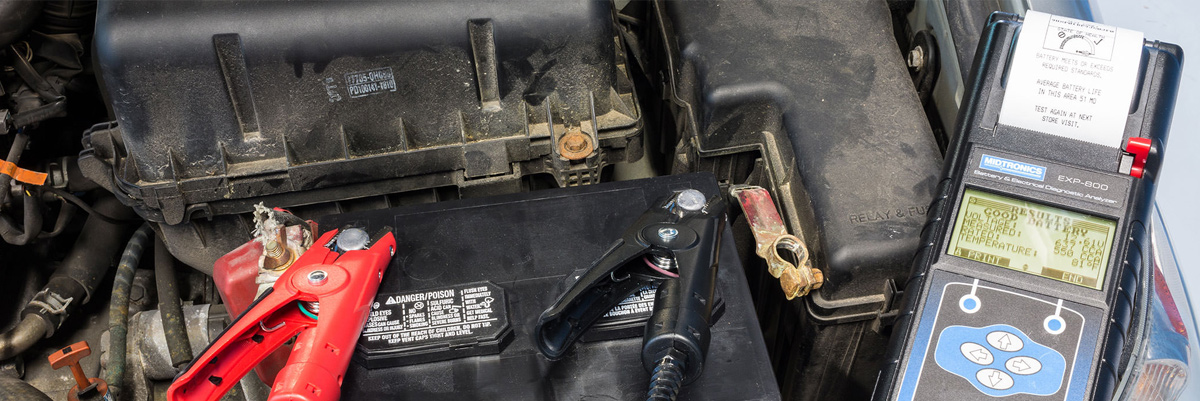
Battery testing should be considered an integral part of any periodic vehicle maintenance routine and should be performed whether or not a starting problem has occurred. Due to the increased electrical demands on the battery, little warning is given before failure. Pre-emptive battery replacement can help eliminate many of the costs and problems associated with a flat or end of life battery.
Before testing a battery, it is important that the battery is fully charged. Even a slightly discharged battery can give a false reading and deem the battery faulty when all that is required is a recharge.
There are many different types of testing equipment available. A digital battery tester is the preferred option as they are safe, easy to use and offer a quick diagnosis of the condition of the battery. Fixed and adjustable load testers, voltmeters, hydrometers and discharge testers can also be used, however correct training is required prior to using any of these testers to prevent personal injury or damage to the vehicle.

Hydrometer

The state-of-charge of a lead acid battery can be determined by the specific gravity (SG) of the electrolyte (its density compared to a reference such as water). The SG can be measured directly with a hydrometer or indirectly by the stabilised voltage with a voltmeter. Please note the temperature of the acid affects the result.

Digital Battery Tester

Microprocessor controlled digital battery tester is easy to use, very safe and can help determine early battery failure. The tester works by transmitting a small signal through the battery that uses measurements of conductance or resistance (impedance) to indicate battery condition.
Most models provide battery, starting and charging tests. Printer options enable results to be given to the customer.

Adjustable Load Tester

Adjustable load tester is a reliable method to determine the starting capacity of a battery as the test applies a real load similar to when cranking the engine. This load however does create a spark risk if leads are connected to corroded or loose terminals.
The standard test is to load the battery to 50% of its CCA rating (Cold Cranking Amperes) for 15 seconds. If the voltage reads above 9.6 volts the battery is ok. For example a battery that has a CCA rating of 600 should be tested at 300CCA for 15 seconds.
The standard interpretation of the result is that if, at the end of the 15 second test, the loaded voltage reading is between 9.6V and 10.6V then the battery is deemed to be good. If the result is under 9.6V the battery is not good and may not crank the engine. It is always recommended that you check the individual manufacturer’s specifications.

Constant Rate Discharge Tester

Discharge tester is a simple method to check the capacity of a battery and are commonly carried out on Deep Cycle batteries.
The tester works by discharging the battery at a pre-set current (Amps) until it drops to a pre- set disconnect voltage. The biggest concern with this type of tester is the time it takes to perform the test.
As an example, if you were testing a 100 Ah (Ampere Hour) battery at 5 Amps, it could take up to 20 hours to complete the test.